Approaching a recipe just for its ingredients is often an incomplete story. As is the case with tangyuan, there’s a much deeper meaning and a richer story behind the glutinous rice ball itself.
As we’ll see in its relation to yuanxiao, the Lantern Festival in the Chinese lunar calendar, there is far more than meets the eye to tangyuan.

Tangyuan, The Lunar Calendar, Yuanxiao and Superstitions
Before diving into tangyuan’s relation to the Lantern Festival itself, we’re going to take a brief step back and start from the beginning. In this case, we’ll look at the Chinese lunar calendar first.
What Is the Lunar Calendar?
While most of us are familiar (consciously or unconsciously) of the Gregorian calendar, there are actually a handful of other systems in use around the world to measure and organize units of time. In fact, there are over 40 different calendars still in use today!
It might seem that time would have been a relatively simple concept to organize and structure, but there’s one key complication that prevents this from being true.
The main complexity comes from the number of lunations, or cycles of the Moon’s different phases. In any given year, the number of lunations completed is not a whole integral figure (integer), so the Moon might usually be in the midst of a cycle at a time that we, in the Gregorian calendar, might be celebrating the New Year.
Technically, though, that’s not the most accurate way to do it. Whether we know it or not, observers of the Gregorian calendar ditch any attempt to stay fully in sync with the total number of lunations. Instead, there’s the leap year rule where an extra day is added every four years to account for the time discrepancy. The leap year rule itself is slightly inaccurate since the rate of lunations have slowly changed with time as well, but you could say it’s “good enough” since it brings a routine to a system full of unpredictability.
By ignoring the intricacies of the lunations, the Gregorian calendar is thus a solar calendar. There are a whole set of other calendars, however, that prioritize the Moon’s lunations over being in sync with the Sun. These lunar calendars instead place the Moon at the focal point of the system. There’s also a third type of calendar, the luni-solar calendar, that takes on the tall order of staying in sync with both.
For the Chinese, it’s the Lunar calendar that reigns supreme. Dating back to the Xia Dynasty around ~2100 BC, the lunar calendar is heavily influenced by natural sciences like agriculture and astronomy, and many of the beliefs in Chinese culture like the Zodiac and the Five Elements can be traced in some way back to the calendar in use.
Yuanxiao: The Lantern Festival
Festivals reign supreme through all four seasons of the Chinese Lunar calendar, though there is perhaps no more important festival than Chunjie, the Spring Festival commonly known as the Chinese New Year.
Think of Chunjie as a prolonged celebration – as if Christmas and New Years still counted as the same holiday – and you begin to get a sense of how big the occasion really is. Beginning in the final days of the 12th lunar month and lasting until the middle of the 1st, the Spring Festival is an opportunity for families and friends to gather together and to usher in the New Year in a way that brings good luck. This might include cleaning the entire house, and it certainly means acting with very good behavior. There’s actually a set of taboos and superstitions that you should not do any time during the Festival!
A landmark celebration for the entire festival is Yuanxiao. Celebrated on the 15th day of the first lunar month, Yuanxiao – also called the Lantern Festival – marks the end of the Spring Festival celebration and is one of the liveliest days on the Chinese calendar.
Traditionally an homage to the first full moon of the year, Yuanxiao has evolved into a massive carnival of celebration throughout the nation. There are major parties held in public, dances of all sorts, solving riddles, and it’s a key time for the youth to go out and mingle with one another. Also a key component of the Yuanxiao celebrations is for families to hang up burning red lanterns that paint the town (more on this later).
Of course, we can’t forget about the food! Tangyuan is one of the key treats enjoyed throughout the entire Spring Festival celebration, but it has a really special place alongside Yuanxiao.
Stories of Yuanxiao and Tangyuan
Yuanxiao as a festival has been around for nearly 2,200 years, so it makes sense that the actual origins of the festival are murky (at best). That hasn’t precluded, however, different theories from springing up.
One thought is that the Lantern Festival coincided with the birthday of Tianguan, the Taoist god of good fortune. In this case, celebrating near his birthday would bring good luck to those who were merry and festive.
Another thought – our personal favorite and the most relevant to tangyuan – begins in the Emperor’s courts during the Han Dynasty. Around the ~1st century BC, there was a maid in Emperor Wu Di’s palace by the name of Yuan Xiao who grew homesick and missed her parents dearly. She was in such misery that she would cry all day and even contemplated suicide!
One day, a man heard her cries and promised her to help. He claimed to read peoples’ fortunes and told many people the same story, that the Jade Emperor (the god of Fire) would start a fire on the 15th day of the first lunar month. Yuan Xiao presented this news to the Emperor, who in turn consulted the help of this fortune telling man. The man suggested that the Emperor do two things to appease the fire god. The first was to offer tangyuan as a gesture of goodwill, and the other was to decorate the city in red lanterns and other decorations as an homage to the god.
The decorations were so vibrant and so ornate that they attracted many passersby, including Yuan Xiao’s parents. Almost instantly, the parents were reunited with their daughter while a tradition was born!
About the Recipe
Preparing tangyuan is a fairly straightforward and simple activity, but there’s one key element to getting it done right: the glutinous rice flour.
Make no mistake about it: glutinous rice flour is not the same thing as regular rice flour! Whereas conventional rice flour is ground from medium and long grains, glutinous rice flour is ground from the shorter, “stickier” grains of rice. What results is a flour that’s slightly lighter in flavor and gummier in texture. Also, while it’s called glutinous, there’s actually no gluten in this type of flour either.

Once you have the right type of rice flour, preparing your dough for your tangyuan is actually very straightforward. You’ll combine the glutinous rice flour with tapioca starch, which you then fold tepid water into to yield a pliable almost sort of “goopy” dough. It’s a dough that might want to slip through your fingers, but it’s one that shouldn’t stick to your hands.
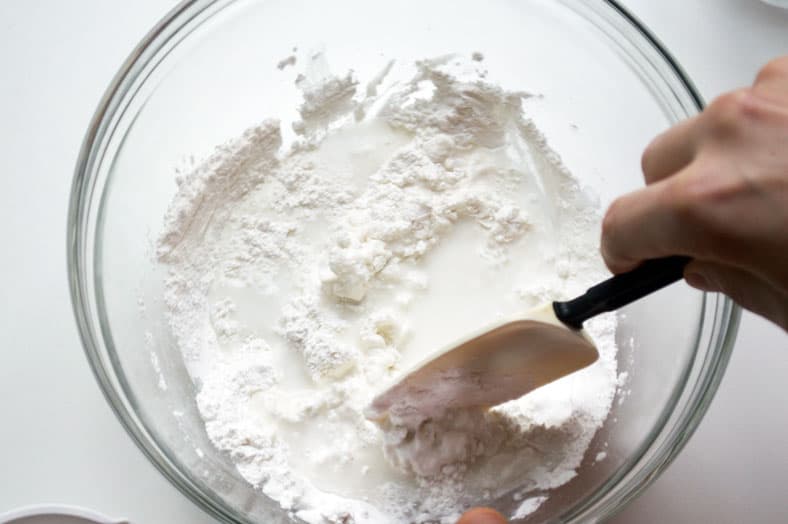
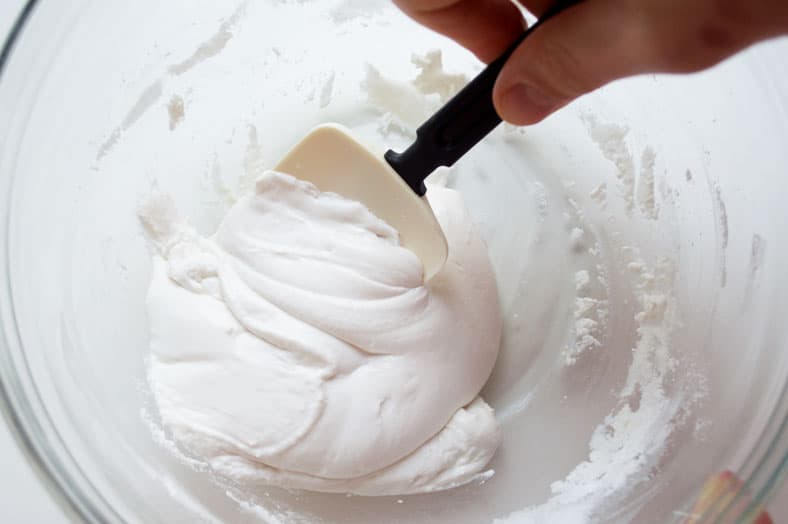
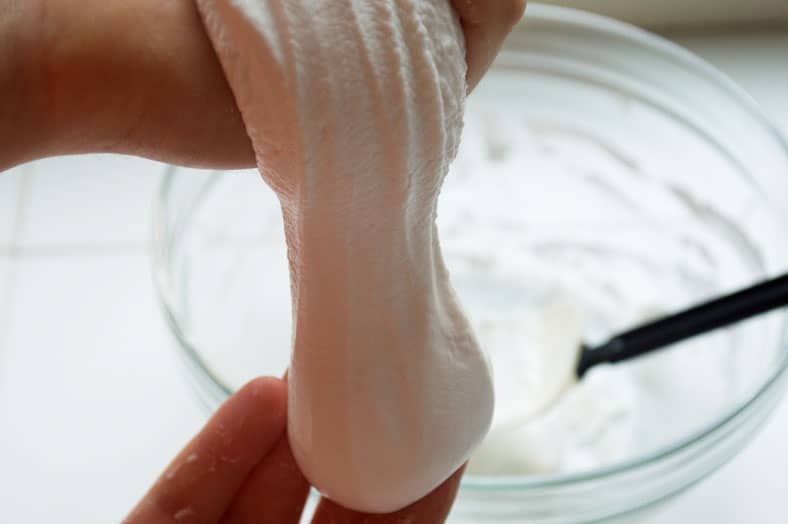
Aside from the dough, there’s also the sesame filling. Technically, tangyuan can have all sorts of different fillings, but a very common one is made with black sesame seeds and sugar. To make this type of filling, all you do is grind the seeds and sugar together, then fold in some sort of fat or anything else that can congeal it together.
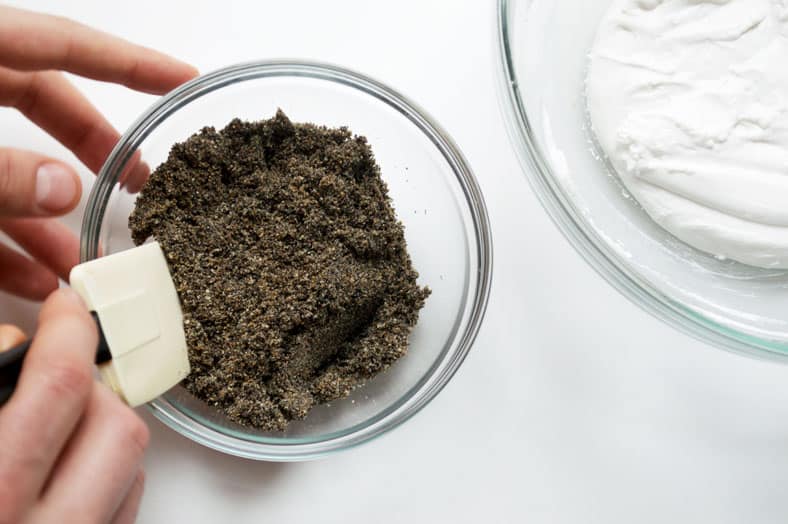
After you’ve made your filling, take a pinch of the filling into the palm of your well-oiled hand, and rub it in a circular motion around your palms until it yields the shape of a ball. At this point, it’s a great idea to quickly freeze your filling so it’ll stay in shape when you wrap and pinch the dough around it.
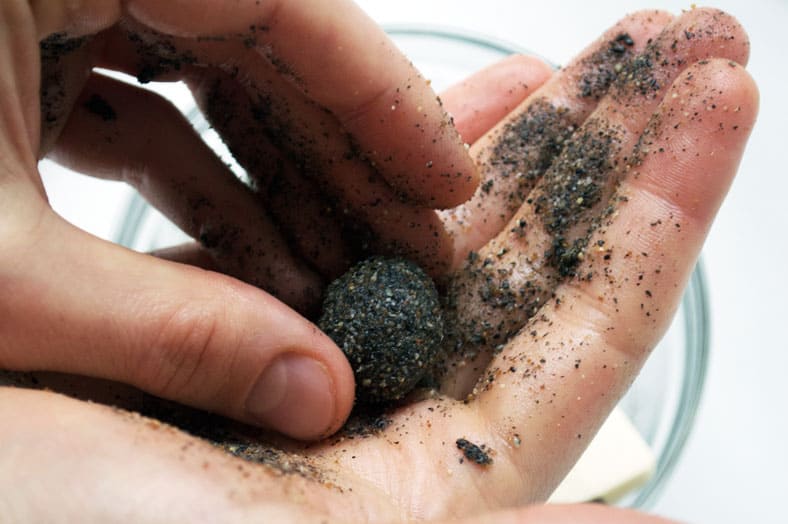
Assembling your tangyuan is really easy once you have your components put together. Take a quarter-sized pinch of dough into the palm of your hand and press and roll it until you have a flat disc shape. In the middle of this disc, you’ll place one of your frozen pieces of black sesame filling, after which point you’ll fold the dough over the filling and pinch it shut.
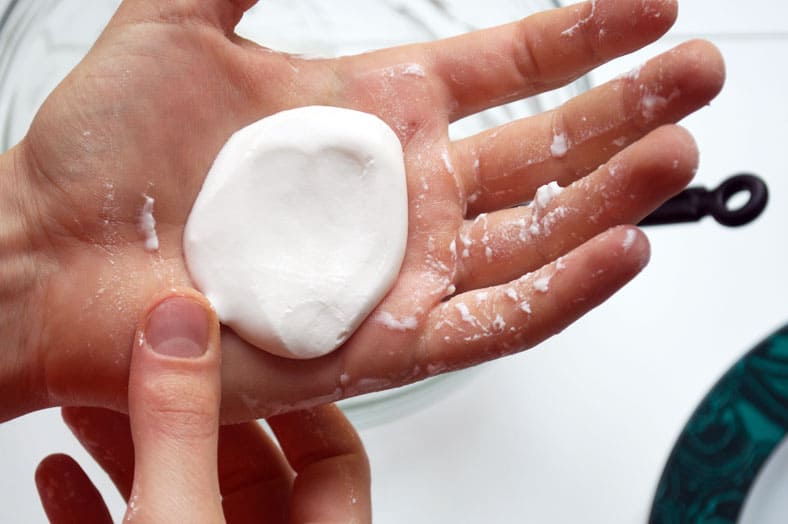
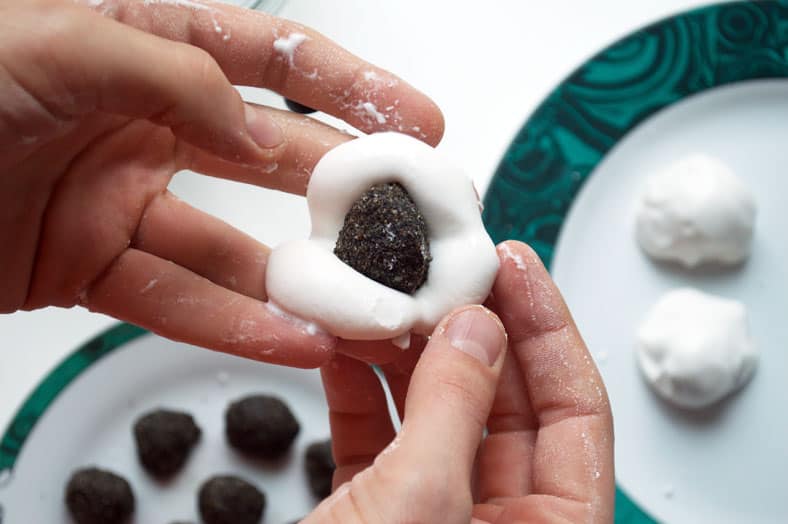

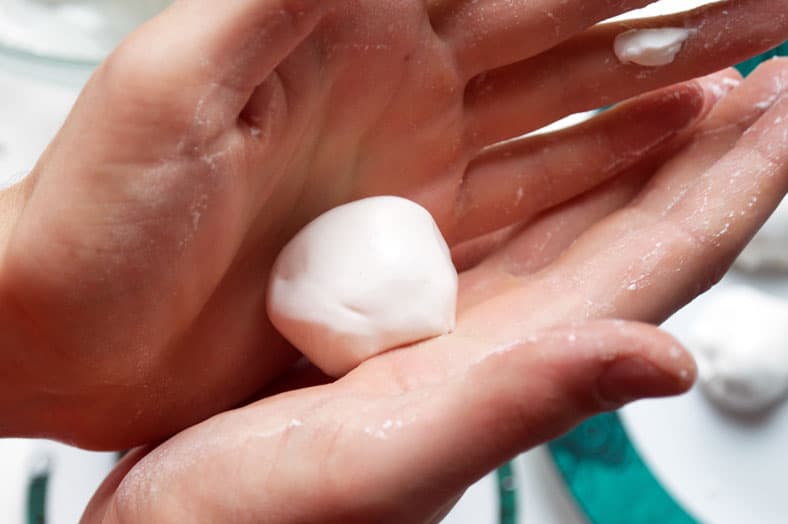
One of the tastiest ways to cook your tangyuan – especially if you have a sweeter filling like this one – is to boil it in a ginger syrup. The syrup consists of only ginger, dissolved sugar and water, so you only need to prepare the syrup by combining the ingredients in a gently boiling saucepan for a few minutes before it’s time to cook your rice balls.
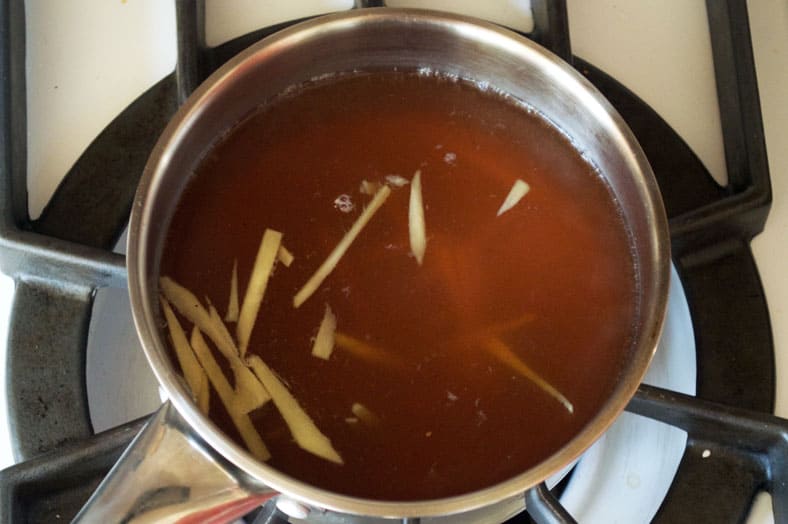
When you have a syrup prepared and over a rolling boil, all you need to do is drop your tangyuan in and wait for them to emerge. After a minute or two of boiling, the balls will rise to the surface and indicate that they’re fully cooked.
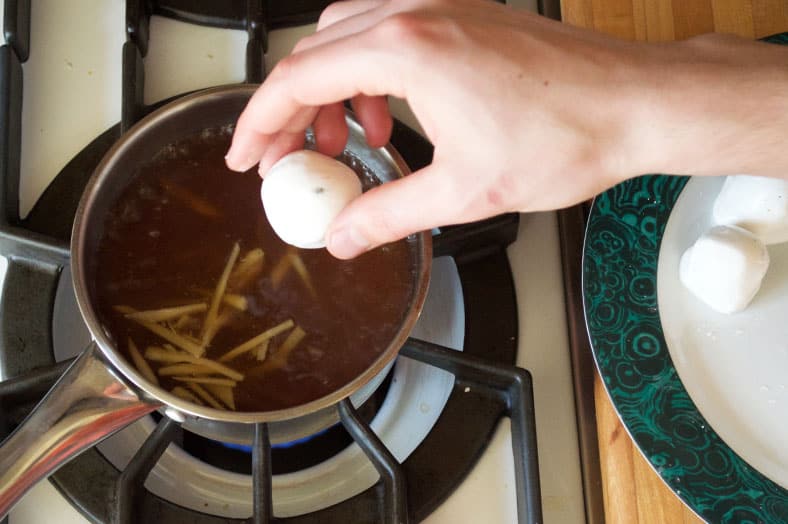


Remove them from the pot, drizzle some of the leftover syrup on top, and enjoy!

Our Take on the Recipe
As you might expect, there were all sort of varieties and regional specialties to tangyuan, so much so that it was slightly overwhelming to choose our reference point! Primarily because of the thoroughness of this recipe (and its choice of black sesame as a filling), we opted to go with this as our original reference recipe, though we did make a few changes along the way.
One goal of ours was to make this a recipe that could be enjoyed by all, so we made an adjustment to use coconut oil instead of butter for a vegan-friendly recipe. Of course, we also used coconut sugar instead of rock sugar or regular granulated sugar in both the filling and the syrup, which we thought not only gave a great color but a heartier flavor to the tangyuan overall.
We also made one key adjustment that we’d seen commonly in other recipes: the use of tapioca starch. Adding in just a dash of the starch – though it’s definitely optional – helps keep the gummy-but-not-sticky texture of the rice balls and actually helps make the dough cooperate with you a little more. For us personally, the dough was just a little more stubborn without it.
Other than that, though, tangyuan is a straightforward, fun and definitely festive dish with a helping full of history behind it.
If you are wondering what best to serve with dumplings, check out our guide on best pairings for dumplings.
Enjoy!
How would you fill your tangyuan? Comment below!


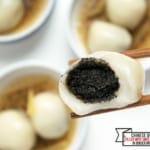
Tangyuan Chinese Black Sesame Dumplings Yuanxiao
- Total Time: 20 mins
- Yield: 20 tangyuan
Description
- ¼ cup roasted black sesame seeds
- 2 tablespoons coconut sugar
- 2 tablespoons coconut oil, melted
- 1½ cups glutinous rice flour
- 2 tablespoons tapioca starch
- 1 cup room temperature water
- 3 slices of ginger
- ¼ cup coconut sugar
- 2 cups water
Ingredients
- Take your black sesame seeds and coconut sugar and combine them in a blender. Begin blending the mixture together until you get a mealy, well-mixed texture
- Transfer your sesame/coconut sugar mixture into a bowl, and gradually fold in your melted coconut oil
- Next, take a small baking dish (one that can fit into the freezer) lined with parchment paper and set it next to you
- With your hands, take a spoonful of sesame mix and roll it into the shape of a ball in your hands. When round, set the sesame filling onto your baking dish
- Continue until you’ve rolled all your filling into balls, then set the baking dish into the freezer for at least 10 minutes to help the filling harden
- While your sesame filling is hardening, mix your tapioca starch and glutinous rice flour in a medium-sized mixing bowl
- With a plastic spatula in hand, gradually fold in your water into the glutinous rice flour. The flour should mix and the dough becomes pliable and “goopy,” but it should not be sticky. If needed, add a dash more of water into the bowl to fully mix all the flour in
- Continue to mix for 1-2 minutes just to make sure the dough is solid and ready to prepare tangyuan with
- Take your sesame fillings out of the freezer and set them (along with your bowl of dough) next to your stovetop and a small stockpot
- Put the stockpot over medium-high heat and add your water. Bring your water to a boil, then reduce the heat to medium
- Add in your ginger slices and coconut sugar, and whisk thoroughly to make sure all the sugar has dissolved into the water. Let it cook together for 2-3 minutes thereafter as it comes back to a rolling boil
- Once you have a mixed syrup that is gently boiling, take a pinch of your glutinous rice flour the size of the middle of your palm, and use your hands to press and roll it flat
- When you have a flat surface of dough, take a piece of frozen sesame filling and place it into the middle of the dough
- Pinch and fold the dough all around the sesame filing. Make sure it’s fully enclosed, then drop your rice ball into the syrup to cook. Repeat this until you’ve filled your stockpot with tangyuan
- When your tangyuan has floated to the top (1-2 minutes usually), they are fully cooked. Take them out of the stockpot and place them into a bowl that’s ready to serve. If you have more dough and filling to prepare, continue until all your tangyuan are prepared and cooked
- Finally, take some of your ginger syrup and drizzle several spoonfuls over your finished rice ball treats. Enjoy!
- Prep Time: 10 mins
- Cook Time: 10 mins
- Cuisine: Chinese

